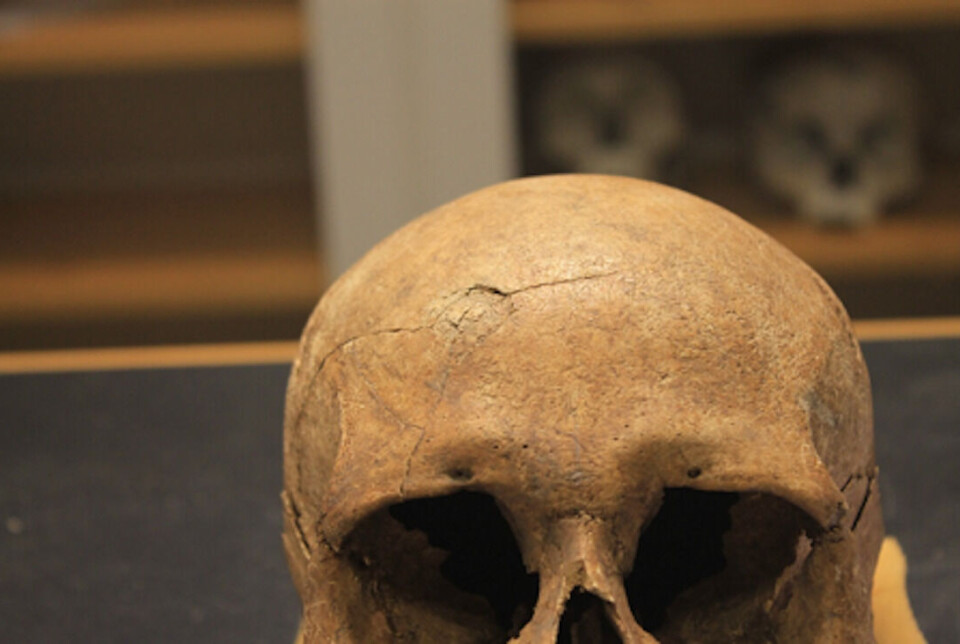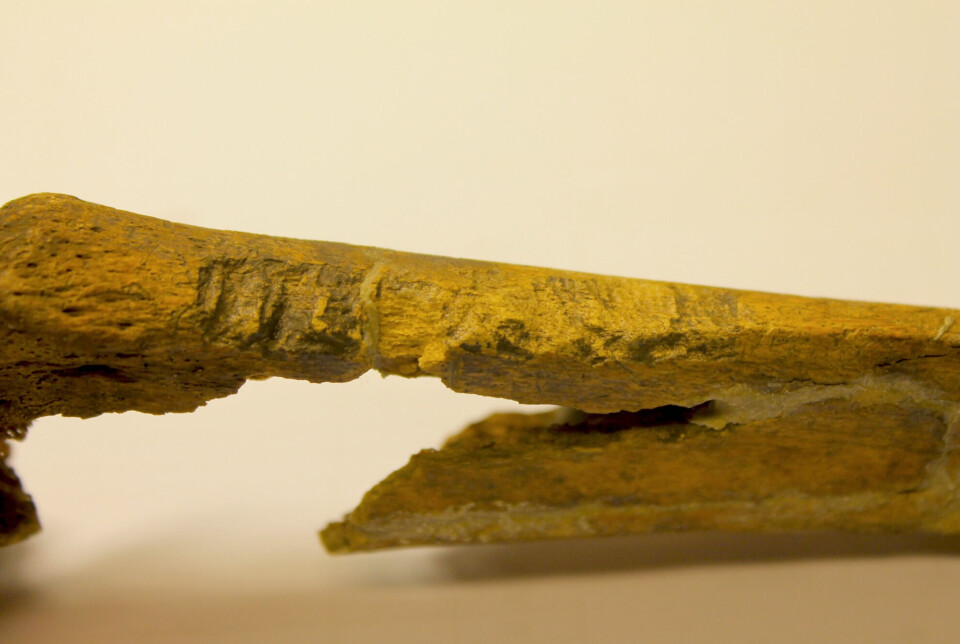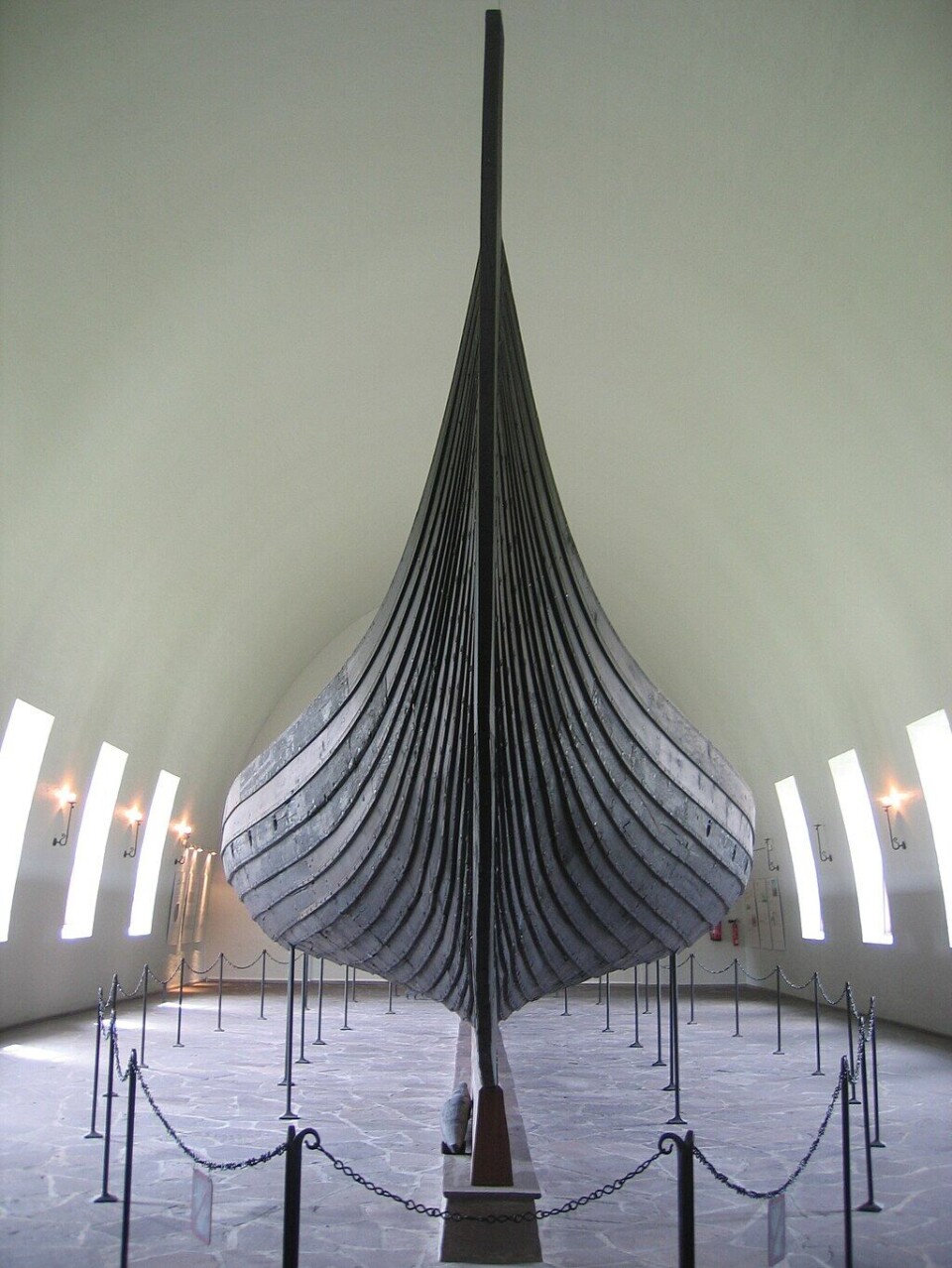THIS CONTENT IS BROUGHT TO YOU BY NTNU Norwegian University of Science and Technology - read more
New clues from old bones: Some Vikings were much more violent than others
An investigation into Viking skeletons reveals a hidden story of violence, power, and the surprising differences between neighbouring Viking societies.

These bones come from all over Norway – from the north, and from the Oslo Fjord region – and a surprising number of them show evidence of brutal deaths.
Some had skulls crushed by blunt force. Others were slashed in the back or leg with swords. A few had arrowheads still embedded in their bones.

“There was a lot of violence in the relatively few human remains that we had to examine,” says Lisa Strand.
She is an osteologist whose assessment of the Viking remains was part of her PhD studies at NTNU.
All told, nearly 40 per cent of the Viking remains she looked at showed evidence of a violent death.
As Strand and a small group of researchers would discover, these Viking bones were not just from unlucky individuals, they were part of a pattern.
And a key piece of the puzzle was that they were Vikings from the place we now call Norway.
How universal was violence?
In a new episode of the podcast 63 Degrees North, Strand and her collaborators talk about how they came to understand the significance of the violence she recorded.
Everyone knows that Vikings are violent, right? The name itself comes from the Old Norse word víkingr, which means pirate or raider.
Previous research has shown that Vikings moved to and settled all over greater Europe. Danish Vikings moved to England, Swedish Vikings infiltrated the Baltic; Norwegians moved to Ireland, Iceland, and Greenland. Even more surprising was that some of these Vikings weren’t even Scandinavians.
But were all Vikings equally violent?
Or could it be that Vikings weren’t a single, uniform group of ruthless warriors, as was previously believed?
A look across the North Sea
Viking bones, the researchers realised, were only a part of the evidence they needed to understand Viking violence.

What they needed was to figure out what shaped Viking societies, and how those forces may have shaped how – and why – people died.
So they decided to look across the North Sea, at Viking deaths in Denmark. And one of the most surprising clues they found involved not only how many of these Vikings had died violent deaths, but exactly how they died.
Beheading, not battle deaths
Nearly all of the Danish Vikings had been executed – by having their heads cut off. That’s not something you do in battle, according to Strand.
“It’s quite time consuming to decapitate someone, even if you're in a battle. You don’t take time to cut their head off. No, no. It’s quite grim, but it’s true,” she says on the podcast.
This was a critical clue, because it suggests that there were people in Denmark, people who were a strong leaders, who had enough power to order an execution.

“The fact that in Denmark, we’re seeing mostly executions, points to the idea of a more centralised authority,” says David Jacobson.
He is a sociologist from the University of South Florida, and was part of the research team.
Another key clue: Grave goods
Among the iconic artefacts from the Norwegian Viking Age are the Viking ships from the Museum of the Viking Age.
Jan Bill, an archaeologist and curator of the ship collection, has studied the Gokstad Ship in detail, including trying to learn more about the man who was buried in this beautiful ship. He was also one of Strand’s PhD supervisors.
“So we have a man apparently dead in battle and we have this magnificent grave, which highly indicates that he was on very top level society, a king or something like that,” says Bill.
But finds like the Gokstad Ship are relatively rare.
Instead, Bill – now working with Jacobson to better understand the violence uncovered by the researchers – realised they needed other information.
And one clue that has endured since the Viking Age is grave goods.
50 times more weapons
There was plenty of evidence to be found in both countries.
“We saw that in both places there were burials with weapons, but the proportions were very different. While in Norway, it’s a very, very common thing that males have weapons in the burials, in Denmark, only a small part of the burials where you would have weapons,” says Bill.
This wasn’t just a trivial difference, according to Bill.
“I was surprised to see how extreme they were... Looking at Norway and Denmark, you have reason to believe that there were about 50 times as many weapons available among the Norwegians if measured per capita, so to speak, compared to Denmark,” he says.
One factor that might have played a role in this striking difference was the availability of iron.
Bill says Norway had much more iron available as a raw material than Denmark, so it was easier to make swords to begin with. Nevertheless, there were still a alot more weapons in Norway.
Swords were Viking-Age handguns
Does that mean that Norwegian Vikings were a lot more violent?
Bill says you can look at modern-day society, where the amount of handguns in a society is correlated with the amount of murders in that same society.
“And you could kind of say that the Viking sword is the handgun of the Viking Age, because you couldn’t really use it for anything else than killing other people, or threatening to kill them,” he says.
The combination of these and other puzzle pieces turned their investigation into something bigger.
It grew into more than just a story of how people died – it became a window into how communities functioned, how justice was carried out, and what held different Viking societies together or pushed them into conflict.
References:
Bill et al. Violence as a lens to Viking societies: A comparison of Norway and Denmark, Journal of Anthropological Archaeology, vol. 75, 2024. DOI: 10.1016/j.jaa.2024.101605
Margaryan et al. 'Population genomics of the Viking world', Nature, 2020. DOI: 10.1038/s41586-020-2688-8 (Abstract)
Strand et al. Multi-isotope variation reveals social complexity in Viking Age Norway, iScience, vol. 25, 2022. DOI: 10.1016/j.isci.2022.105225
More content from NTNU:
-
Why are pregnant women in Norway so worried?
-
Politics on Facebook: Populist parties choose divisive issues on purpose
-
Social media is connected to cyberbullying – but not how we thought
-
Forskere ved NTNU får nesten 24 millioner av EU for å lage nye strømomformere
-
This helps the youngest children enjoy school more
-
Can we tap the ocean’s power to capture carbon?





































